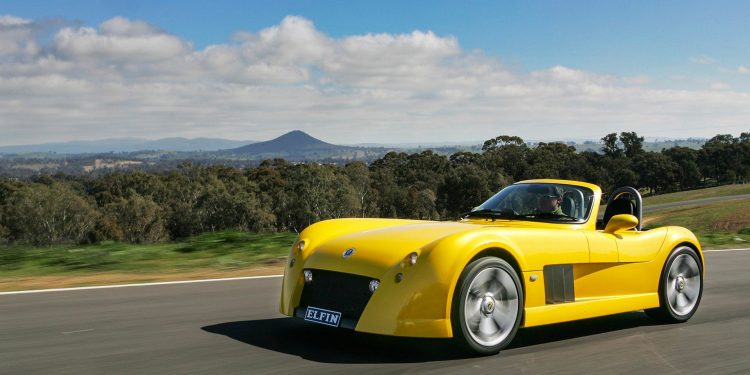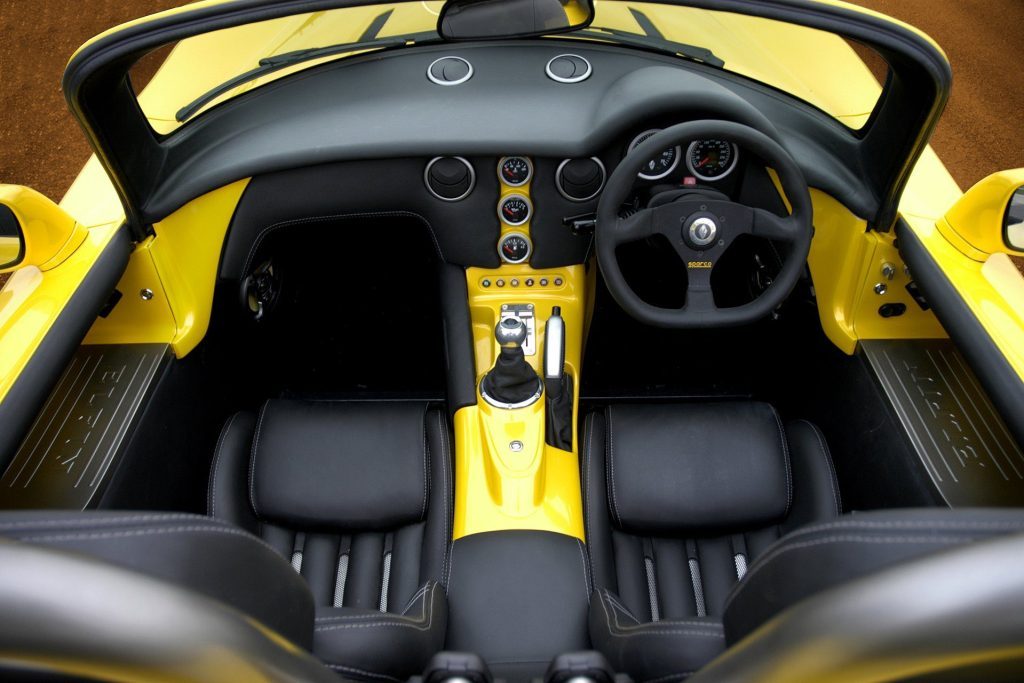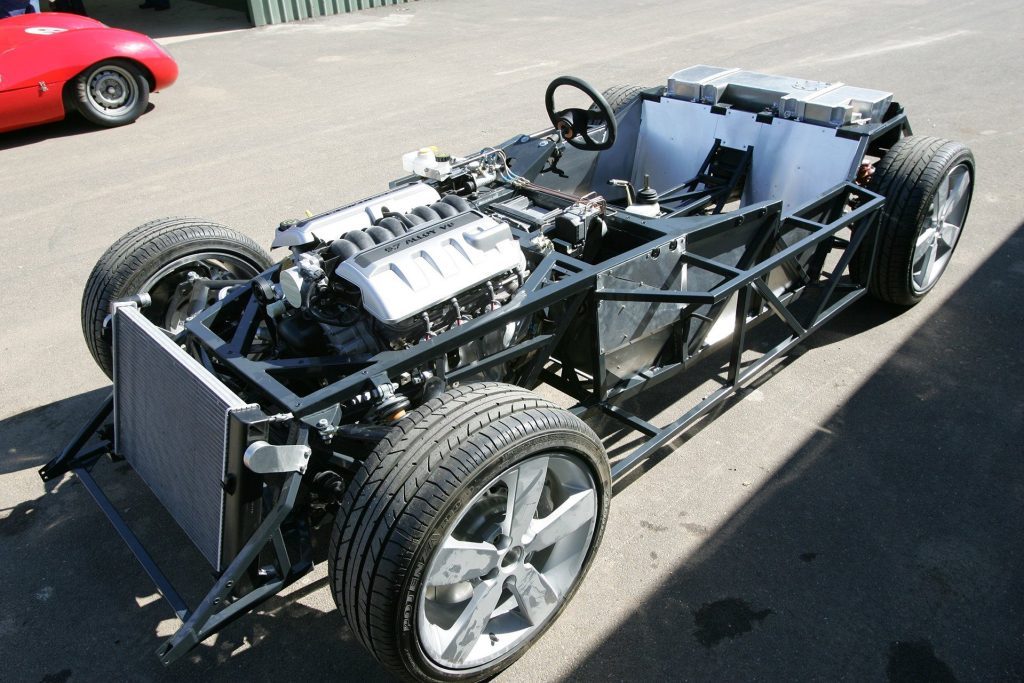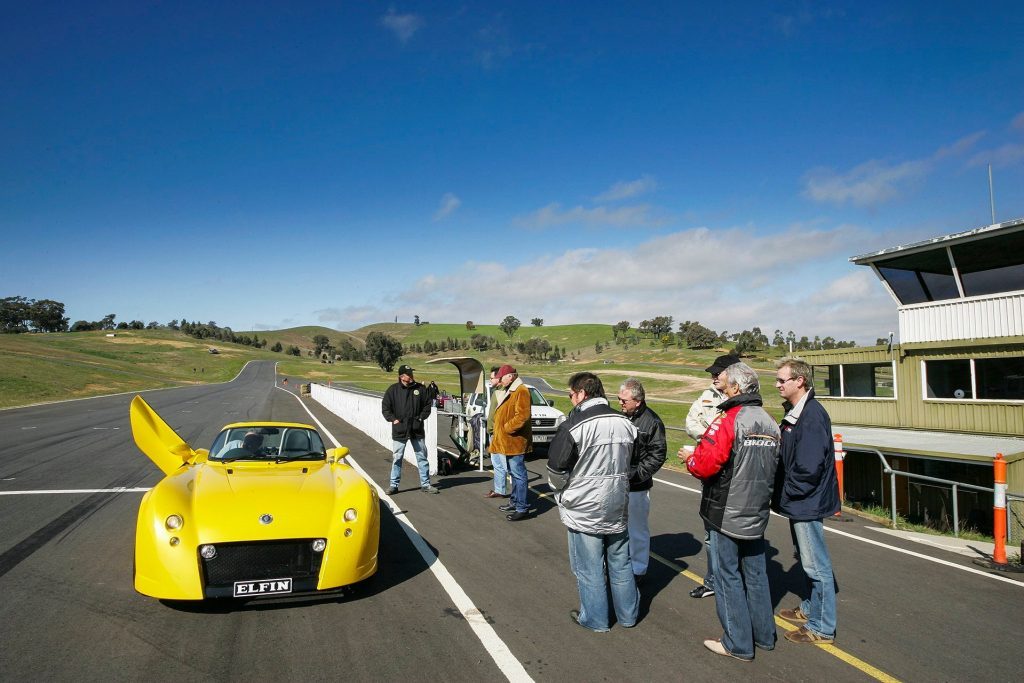2006 Elfin MS8 Streamliner track test
Words: Bruce Newton | Photos: Tom Gasnier
Been hanging out for an Australian version of an AC Cobra? The wait is over. Meet the Elfin MS8 Streamliner.
Photos don’t do justice to the Elfin MS8 Streamliner. In two dimensions it loses some of the barely controlled aggression it exudes in real life. And alive it seems to be, so confronting when you sight it for the first time, sitting idling chunkily next to the main straight of the Broadford motor racing circuit in central Victoria.
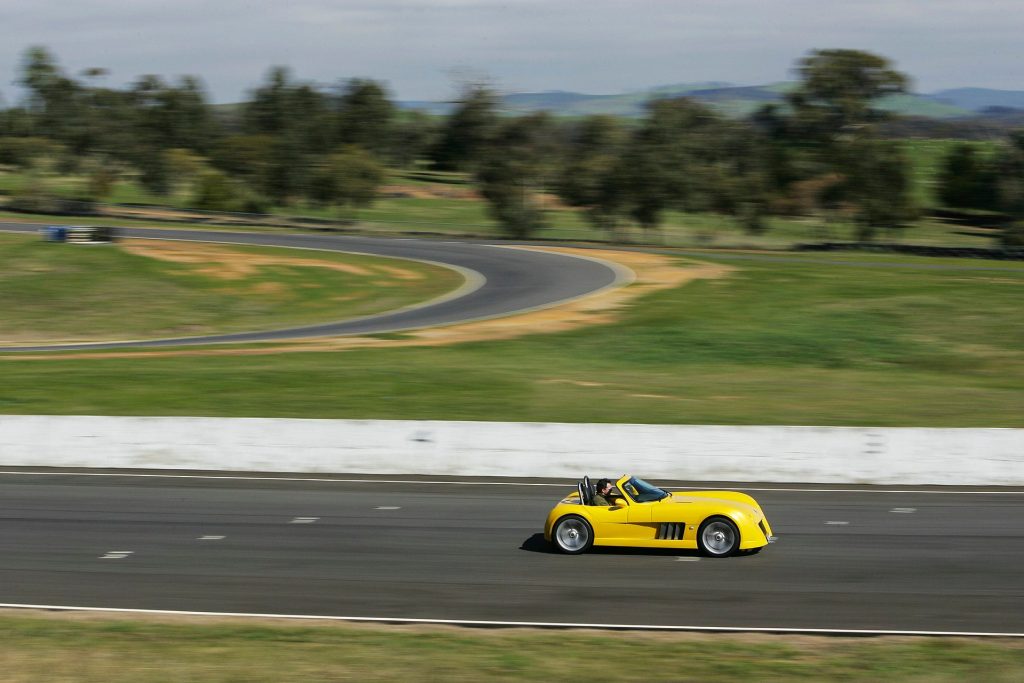
The shockingly exuberant yellow paint job contrasts dramatically with the minimalist use of GRP bodywork that looks like it has been painted over the Streamliner’s mechanicals. And yet the front of the car is TVR-ish in its graphical over-statement: the huge, black grille mouth and the headlights that drill into the pronounced fenders.
Move to the side and you become aware of the oh-so-long bonnet, the ducting that slashes into the body behind the front wheel arches and the beefy, 18-inch alloy wheels. The cockpit, marked out at its front edge by that tall raking screen, sits right over the rear wheels. Only a sliver of bodywork protrudes any further back, with twin chromed pipe ends peering out bottom left and right. There’s no room for a folding roof or anything to hold luggage of any size, particularly once you realise the purpose-built 67-litre fuel tank sits under there somewhere. This then is serious, honed stuff. A front-engined rear-wheel-drive roadster that will take just two passengers, and damn the incidentals.
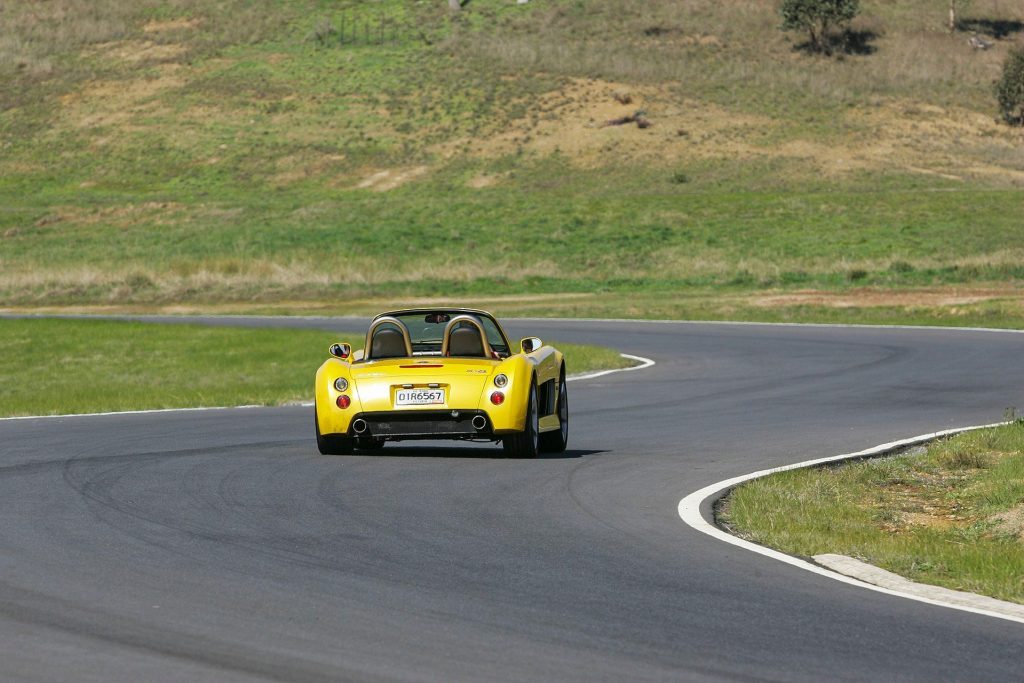
And that is just what the owners of the small Aussie sports-car concern, Bill Hemming and Nick Kovatch, wanted when the decision to build this car was made. The Streamliner is the close relation of the MS8 Clubman that we featured in these pages back in January. The two cars have jointly been in development before and after their sensational debut as concept cars on the Holden stand at the 2004 Melbourne international motor show.
The core specification is the same. Both are built around a box-section mild steel spaceframe. The drivetrain comes from Chevrolet via Holden in the form of a 245kW version of the 5.7 litre Gen III, Tremec six-speed manual gearbox, and 3.46:1 limited slip differential. Suspension is double wishbone all round as designed by Kovatch and his chief engineer, Arthur Neill (both have extensive motor-racing backgrounds), purpose-built aluminium brake calipers come from APS, and vented and slotted discs from DBA. The whole lot is assembled in Elfin’s small factory in the Melbourne suburb of Moorabbin.
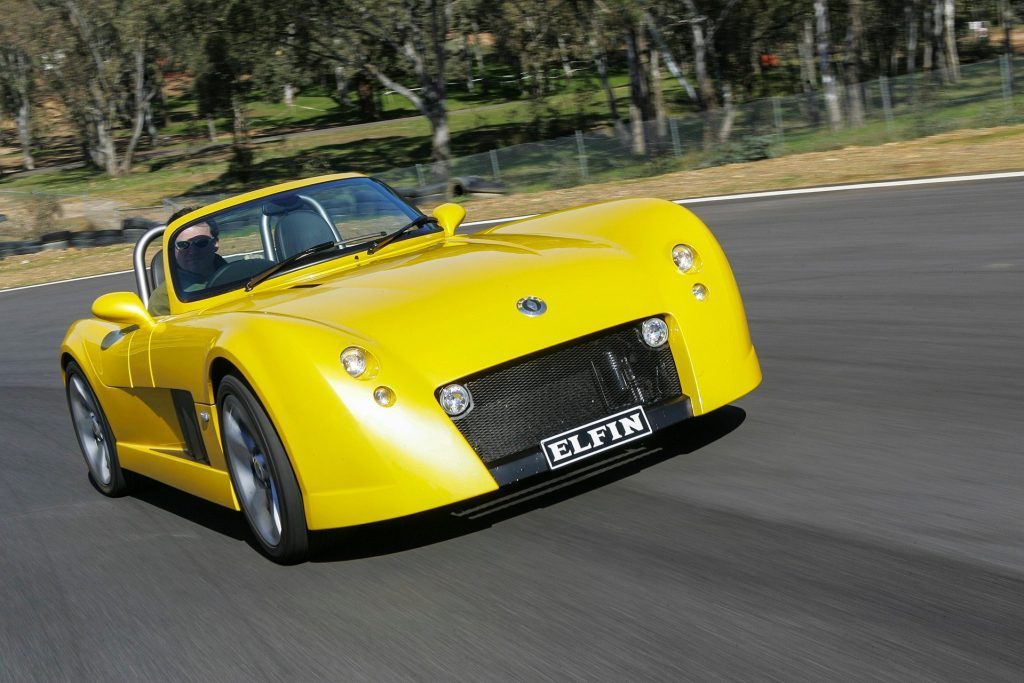
There are differences between the two cars, of course, most notably the exterior shape. While the Clubman obviously takes its inspiration from the traditional Elfin Type 3 Clubman, the Streamliner is based on the rare original Elfin Streamliner built by the company’s founder, the late, great Garrie Cooper, between 1960 and 1963. Both MS8s have been shaped by Holden senior designers, the Clubman by Max Wolff (now at GM Daewoo) and the Streamliner by Peter Hughes.
There are technical differences too. The Streamliner’s chassis is broader thanks to outriggers that attach to the bodywork, it has a 50mm wider cockpit, and it also employs a standard Commodore radiator rather than a bespoke unit because of its wider nose. It’s heavier as well, by around 250kg. But that doesn’t make it slow. No sirree. Weighing in at just 1100kg, it still has a power-to-weight ratio to shame almost anything this side of a true supercar, and it should be able to produce sub-five-second 0-100km/h dashes and sub-13-second 0-400-metre runs.
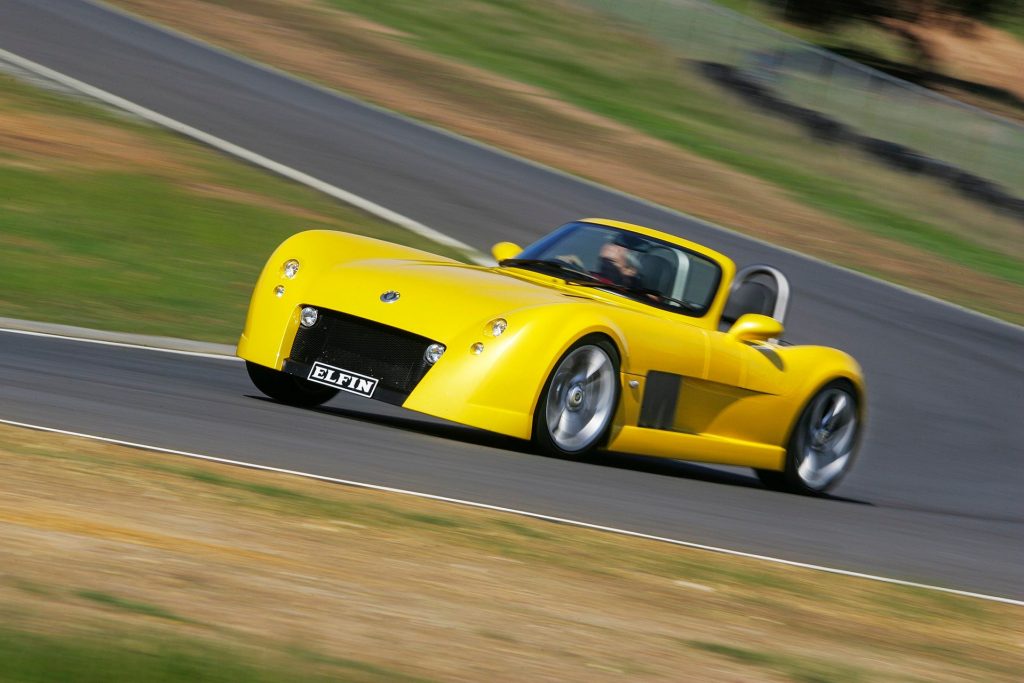
If that all sounds a bit harsh and extreme, the first taste of the Streamliner is actually amazingly civilised. Despite appearances, you don’t actually just clamber over the side and into the cockpit. No, press a button and the door (or half-door really) glides up and forward from its hinge on the front edge of the B-pillar. Once you’re in, having stepped over the Elfin-branded scuff plate, the door then merges back into the side of the car like magic. It reinforces that this is not your usual kit car. But then, at $AUS135,850 it wouldn’t want to be.
The seat, with its chrome mesh inserts is familiar from the Clubman drive, as are the flat-bottomed three-spoke Sparco steering wheel, twin main dials with Elfin logo in the tacho, three minor gauges stacked down the centre console and leather trim. Spartan but nice. The door armrest for your elbow is new, though; in the Clubman your right arm was left hanging in the breeze. There’s even air conditioning if you care to option it. And coming soon, a removable hard-top.
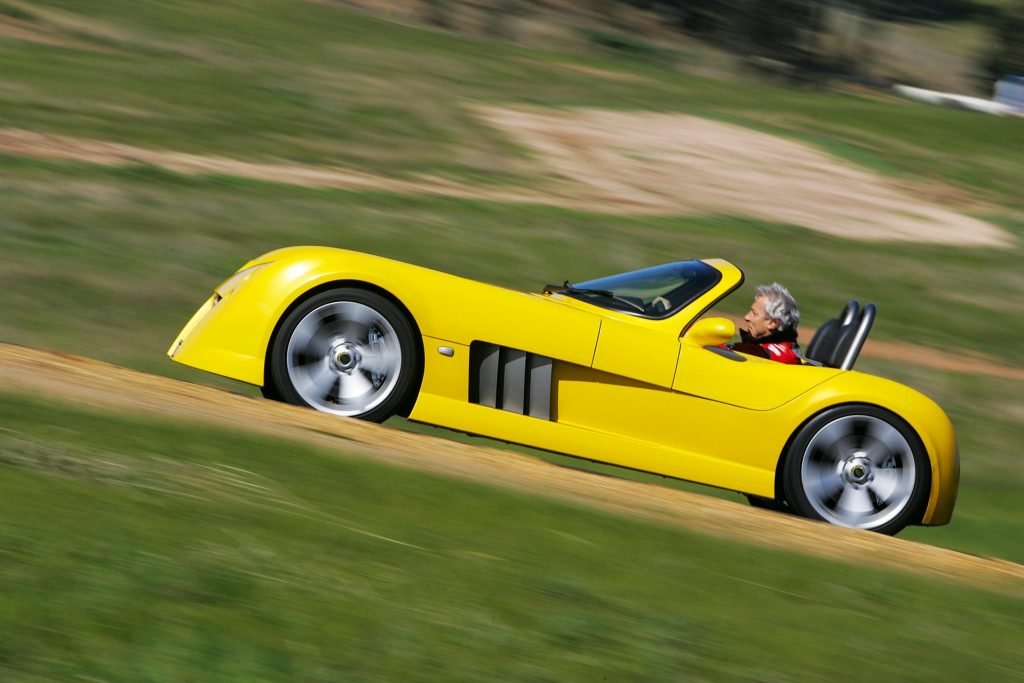
But forget that luxury for our first drive. For a start, it’s sunny, so no need for cover; secondly, that engine deserves to be heard loud and proud; and third, we need to see if the screen actually does protect your head from wind buffeting. The good news is it does. But to be frank, there’s little time to pay much attention to such niceties when driving the Streamliner, because you have to concentrate on what the car is doing. That’s particularly the case at Broadford, a sinuous track designed primarily for motorbike racing that includes a blind, cresting right-hander, a couple of tricky off-camber exits, and a set of quick downhill esses. In other words, a completely different environment to the Calder dragstrip (with wiggle) where we drove the Clubman.
In this testing environment the Streamliner’s proving quite hard work to muscle around – literally. The unassisted steering is heavy – although it lightens a touch as you get it off centre – and the unassisted brakes require plenty of force on the pedal before strong retardation becomes evident. No doubt they do work though, which is handy, because the Gen III is turning this thing into a yellow blur on Broadford’s short straights. To the accompaniment of a tremendous bellow and an almost unrecognisable directness from the gearshift, we’re flying. This is no high-revving thrasher, however: there’s a great welling up of torque which actually makes those gear changes a little infrequent.
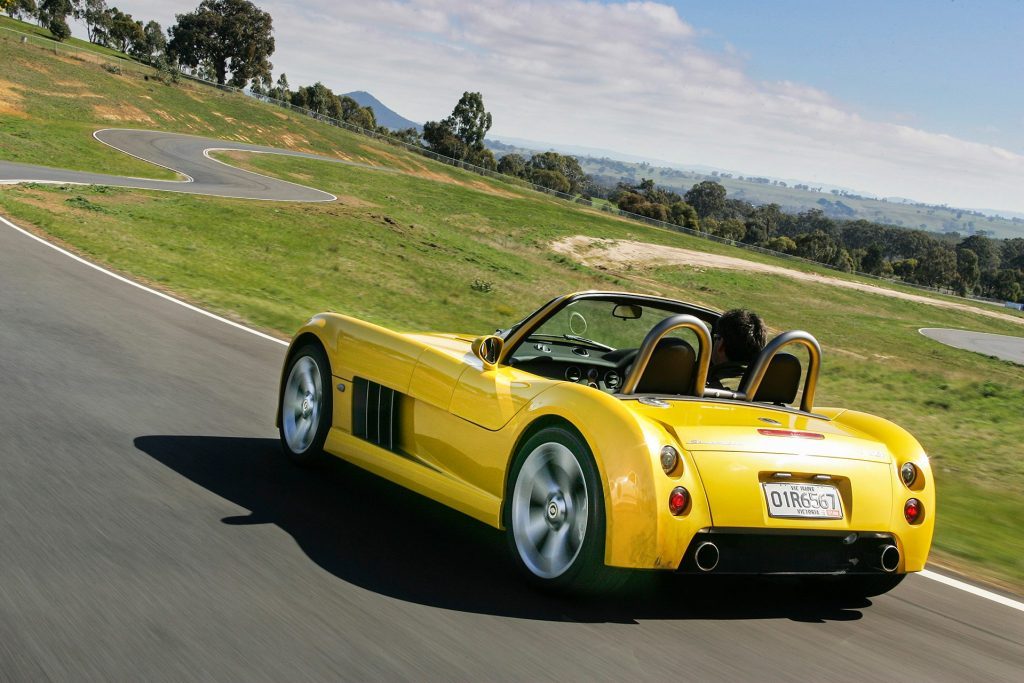
But then applying that torque becomes more of an issue in corners. While turn-in is as sharp as a butcher’s knife, the Streamliner’s first desire is to understeer as power is squeezed back on. Give it a boot-full on exit and you’ll get a fair amount of oppy lock happening. And not necessarily controllable either, as one colleague discovered with a 360 coming onto the straight – a combination of too much power too soon on an off-camber exit. What exacerbates your apprehension is the rearward seating position, every twitch and sideways movement of the back tyres is sensed in nanoseconds – without filtering.
It felt nervous, like only skilled operators need apply if the desire was to attract real speed out of this thing on road or track. And it was fair to say that was the consensus that emerged from the assembled media at Broadford, as well as one or two guest drivers including the late Peter Brock. Hemming and Kovatch obviously listened, because there’s since been some refining done to make the car an easier drive at any speed. Rebound damping adjustment and the removal of the rear sway bar are designed to lower the predilection for snap oversteer, a 25mm extension of the steering arm has reduced turning effort by about 25 per cent, and the front brakes are now power assisted with ABS also part of the calibration.
All sounds good. Must be time for another test drive. The beast might be tamed a little, but I’ll bet it’s still alive and kicking!
| Model | Elfin MS8 Streamliner |
| Price | $135,850 |
| Engine | 5667cc V8, EFI |
| Power | 245kW/465Nm |
| Drivetrain | 6-speed manual, RWD |
| Weight | 1100kg |
This article originally appeared in the February 2006 issue of NZ Autocar Magazine.


